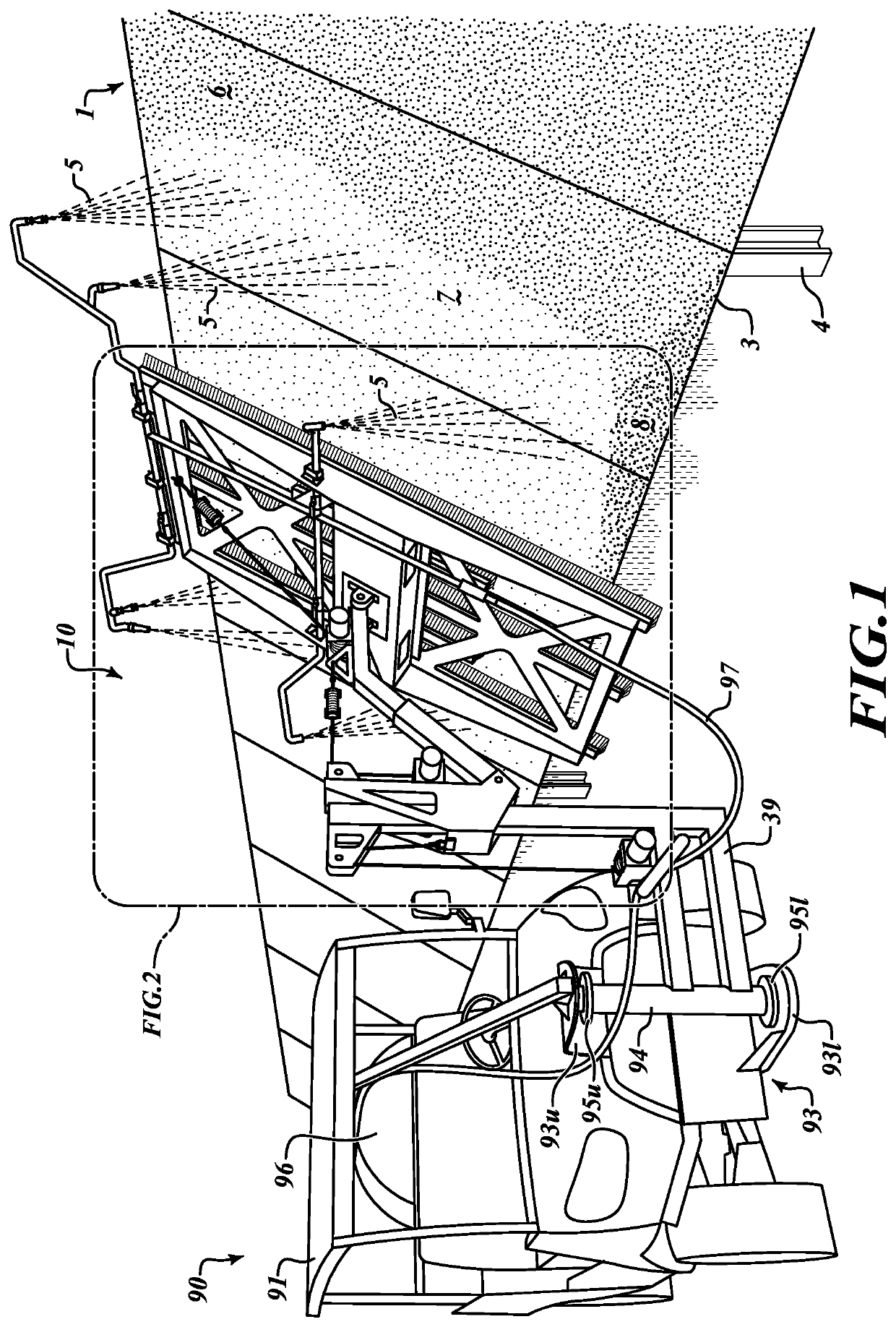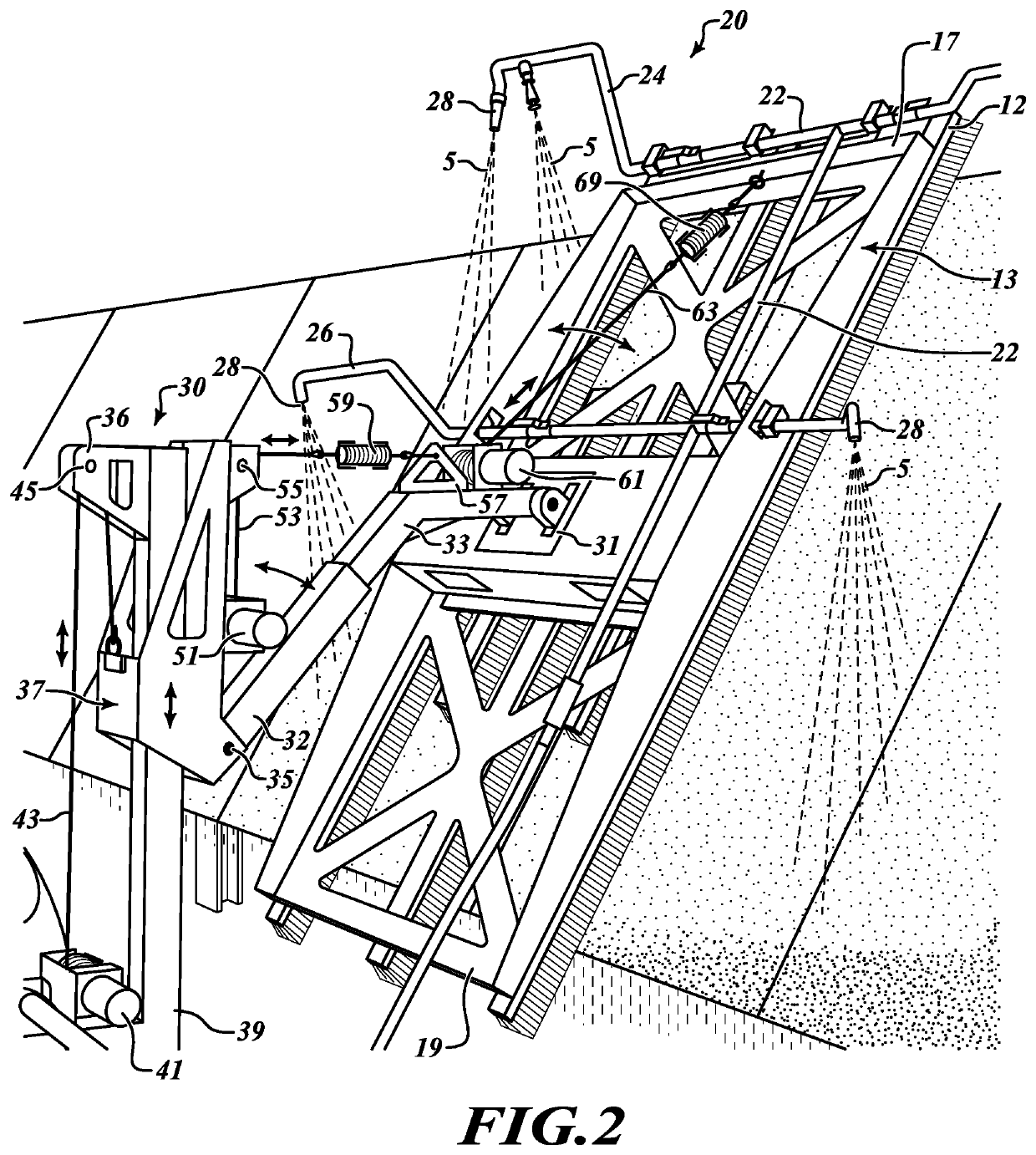Brush-Supported Solar Cell Washing System and Method
a solar cell and washing system technology, applied in the direction of cleaning processes and apparatus, reverse direction vortex, cleaning using liquids, etc., can solve the problems of less power produced by cells, so great danger of solar panels being injured, and the current solution for washing photocell arrays is impaired
- Summary
- Abstract
- Description
- Claims
- Application Information
AI Technical Summary
Benefits of technology
Problems solved by technology
Method used
Image
Examples
Embodiment Construction
[0018]Distinct from the approach taken by the prior art, rather than to exploit heavy hydraulic actuators and such vast and heavy heads to perform the washing of a surface of a solar array 1, the present invention relies upon a lightweight washer head assembly 10. In use, the lighter assembly is sufficiently supported by the bristles of the several lath brushes to transit a surface of a solar cell without injury either to the solar cell or the supporting structure. These same lath brushes are used to scrub clean the surface of the solar cells that make up a solar panel. Because the number and area of the brushes is selected to distribute the weight of the head over a large region of the surface of the solar panels 3 that make up a solar array, no particular part of the surface must support a large localized vertical force. In this way, the washer head functions in a manner analogous to snowshoes which work by distributing the weight of the person over a larger area so that the perso...
PUM
 Login to View More
Login to View More Abstract
Description
Claims
Application Information
 Login to View More
Login to View More - R&D
- Intellectual Property
- Life Sciences
- Materials
- Tech Scout
- Unparalleled Data Quality
- Higher Quality Content
- 60% Fewer Hallucinations
Browse by: Latest US Patents, China's latest patents, Technical Efficacy Thesaurus, Application Domain, Technology Topic, Popular Technical Reports.
© 2025 PatSnap. All rights reserved.Legal|Privacy policy|Modern Slavery Act Transparency Statement|Sitemap|About US| Contact US: help@patsnap.com



